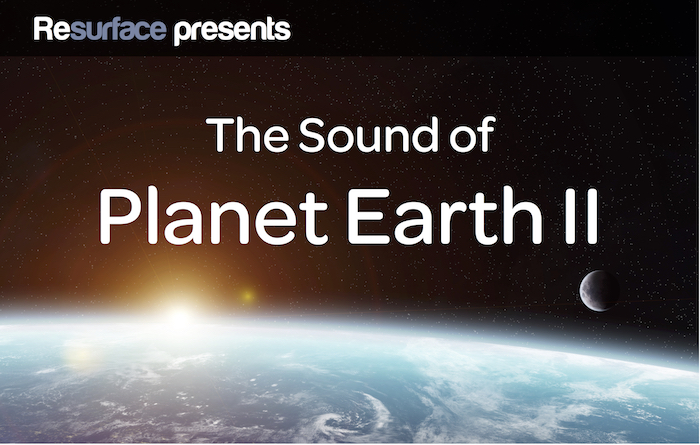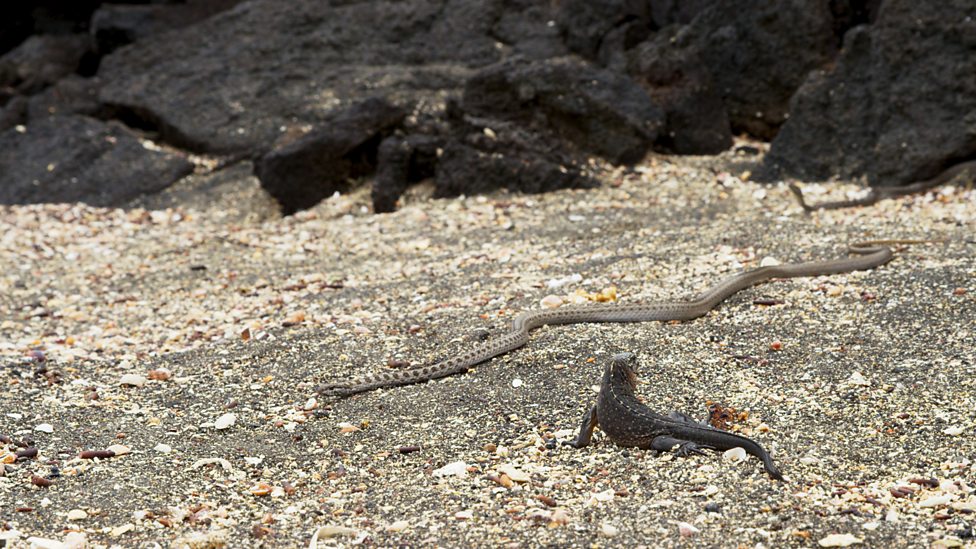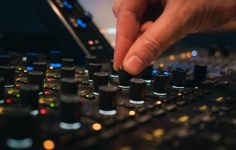4.5 Billion Years in the Making (Plus Ten).
Sunday November 7th saw the return to the UK’s screens of the BBC’s flagship natural history offering: Planet Earth II. Ten years have passed since its first outing. The first Planet Earth aired in 2006 and went on to be versioned and shown in 130 countries. It was the most expensive nature documentary ever made, the first to be commissioned by the BBC in HD, and was the most watched cable event of all time when it aired in the US. That series earned dubbing mixer Graham Wild a Primetime Emmy nomination, with Sound Designer Kate Hopkins winning the Emmy in the Sound Editing category. Graham and Kate were also jointly nominated for a BAFTA for Best Sound Factual.
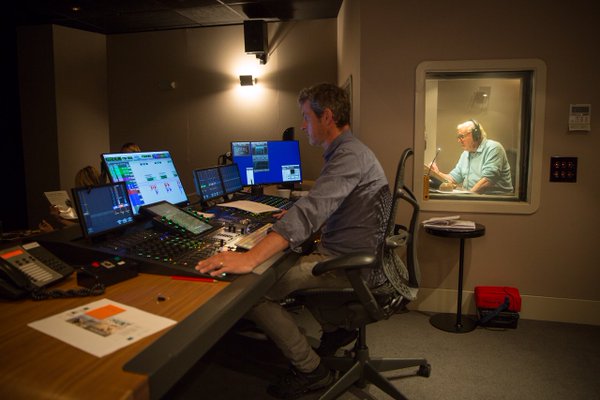
True to form, Planet Earth II pushes technological boundaries in today’s currency. Shot in 4k UHD and making full use of motion-triggered camera traps and drone techniques to acquire groundbreaking shots of species we’d scarcely imagined, let alone seen. (SPOILER ALERT: Dolphins in a Jungle??)
Narrated by Sir David Attenborough (although Series 1 was revoiced by Sigourney Weaver for Discovery Channel) and with a score led by none other than Hans Zimmer (through his company Bleeding Fingers), Planet Earth II’s sonic gravitas is a given. As Hans recently told UK newspaper The Telegraph:
“We decided to film this as a drama. Which is absolutely what it is. The truly remarkable thing is that all fiction pails in comparison to the reality that we have shown here”.
Expectations were sky-high and Episode 1 delivered in spades to a catchup-era UK TV audience still in excess of 9m. Resurface caught up with Graham and Kate to talk about their approach to the project and its unique set of creative challenges and rewards.
Natural Curiosity
RESURFACE: When a series like this comes along, there’s generally quite a lot of press coverage around the new technology and techniques that were employed in getting the footage. Each episode also has its own built-in making of vignette, but it’s all about the visuals. Can you give us an insight into the sound of Planet Earth II? For example, were the crew able to capture ‘previously unheard noises’ too?
 KATE HOPKINS: If anything, the extraordinary lengths that the crew go to in capturing those shots make it less likely that we’ll get production sound to work with. Partly that’s the technology – because drones and mics don’t mix, or they’re shooting high frame rates off-speed. Partly that’s because if you’re putting two camera crew in real jeopardy to get a shot, there’s an obvious reluctance to send a sound recordist along too! That said, the audio you can capture with GoPro, for example, is very useable where you have it. Whenever there was time – and it was quiet – the crew recorded atmospheres and whatever else they could.
KATE HOPKINS: If anything, the extraordinary lengths that the crew go to in capturing those shots make it less likely that we’ll get production sound to work with. Partly that’s the technology – because drones and mics don’t mix, or they’re shooting high frame rates off-speed. Partly that’s because if you’re putting two camera crew in real jeopardy to get a shot, there’s an obvious reluctance to send a sound recordist along too! That said, the audio you can capture with GoPro, for example, is very useable where you have it. Whenever there was time – and it was quiet – the crew recorded atmospheres and whatever else they could.
R: So there you are, handed a “locked” picture cut of six of these hour-long 4k wildlife extravaganzas, and each time you’re faced with a blank Pro Tools session?
KH: Almost blank, there will be temp sound in there which I’ll have provided to the picture editors, for context and guidance as to what I have in mind for the scene. But essentially, yes.
R: And how much time do you get to build each of the six shows?
KH: From getting that locked picture to premix is 15 days for each show, then it’s over to Graham.
Hunting in Packs
R: At what stage do you get to hear the score, to see how it plays with your tracklay?
KH: Graham and I collaborated with the music team from very early on, from around a year before the pictures started being delivered to me.
In the same way as we’d be sending editors temp sound design sequences to show our intentions, we’d be talking to Jacob (Shea) and Jasha (Klebe) at Bleeding Fingers about where the tracklay would be heaviest, where there’s more room for music to tell the story, so that we can naturally work together better once it comes to the mix.
R: One thing that strikes me as unique about a show like this is that you frequently build up to a dramatic crescendo where there’s an important piece of commentary, a big orchestral cue and an elaborate FX build all at the same time. You would typically never have that in, say, a drama: It’s either a plane crash or dialogue, never both. How is that to mix?
GRAHAM WILD: That’s very much the challenge. If you throw all that in, it can come out sort of ‘brown’! As Kate mentioned, the collaboration from very early on meant that the score and the sound design were working together as well as possible when we came to the mix. My task is to weave and sculpt to make that all work, and work alongside Sir David’s narration.
R: But sometimes, presumably, something’s got to give?
GW: Sometimes that’s one element entirely, whether it’s an explanatory line of commentary we’ll cut, or a music cue. It’s all superb, but you can have too much of a good thing. Very often it’s a tweak to each element in turn. We were sending music cues back to the composers, and they would send us back reworked stems that better suit the new edit, or I’d call Kate and ask her if she could subtly shift the emphasis of the tracklay in a particular scene and dropbox it over to me.
R: You guys both worked on the first series of Planet Earth, ten years ago, what’s different this time around.
GW: A big difference for me on a personal level is that now I’m freelance, so I’ve been able to devote chunks of time to the project at various stages along the way. To get more involved, earlier. This time we’ve collaborated across the sound, music, editorial and production teams much more than in the past. The technology we use means I’d had the chance to hear Kate’s tracklays and synth versions of music cues set against edited sequences months before it came to the mix, so I arrived at that point with a very clear idea of what was needed. I’d also have commentary, so I could go through and mark up lines where perhaps we could pare it down.
“Immersive” Audio
R: Speaking of the technology, what has been the impact of advances in that regard, compared to series 1?
KH: Track counts are an obvious one, the other is the audience’s expectation, and the two are linked. With Planet Earth II we wanted the sound to be immersive. That’s a word normally associated with surround, but our definition was deeper and more literal. I designed the sound to match the perspective of the animal, to put the viewer in their world. Not just the noise they’re making but what they are hearing, conveying whatever they are faced with in that moment,
The animal is a character in an incredible story, not simply the subject of a documentary.
GW: I think we did Series 1 on Audiofile, and for the sound of Planet Earth II there are eight 5.1 stems just for the music! Much of what we were able to achieve with sound back then is just not enough anymore, the audience is accustomed to better, so the immersive aspect was central to our approach. The technology enables us to maximise the amount of “brain time” we can put on the screen. It also makes it so much easier to collaborate in the way that we did, sending a premix to a producer or sharing elements back and forth.
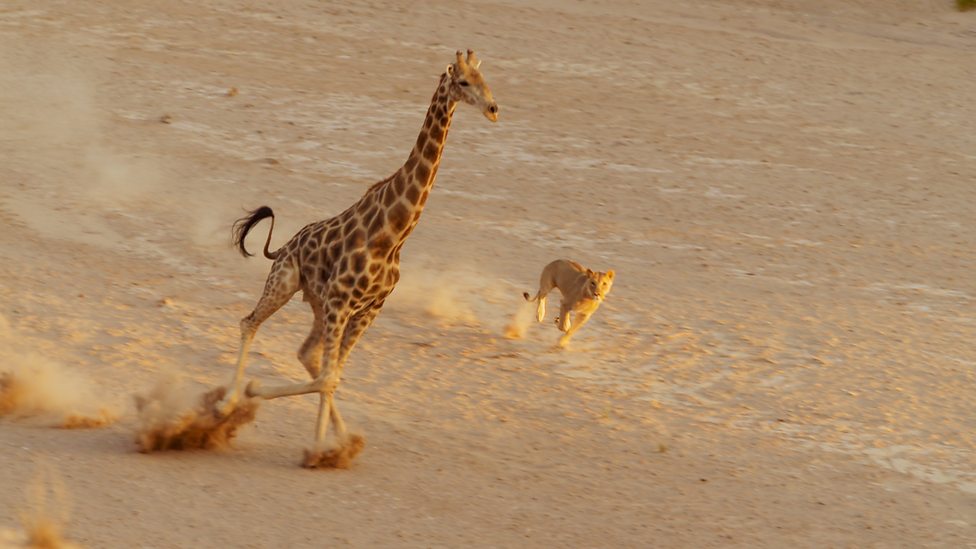 R: Now that Planet Earth II is airing in the UK, is your work done?
R: Now that Planet Earth II is airing in the UK, is your work done?
GW: Basically, yes. We know that it will be aired in different ways in a lot of different places, but when it’s versioned we’re not involved for the most part. I created a kit of parts, with over 200 different deliverables. It used to be the case that you’d have TV Channels in other territories taking the show, but now the definition of “channels” and “territories” is drastically different, so I’ve catered for all those eventualities.
UPDATE APRIL 2017: Planet Earth II ‘Cities’ wins Best Sound: Factual award at the British Academy Television Craft Awards! See. Told you it was good.
Resurface thanks Graham and Kate for taking the time to talk to us about this extraordinary piece of work. Planet Earth II is currently showing on Sunday nights on BBC1 in the UK, and is available on iPlayer. Other confirmed transmission dates worldwide include:
Nordics: 6 Nov.
Poland/China: 7 Nov.
Singapore: 14 Nov.
Spain: 23 Nov.
Belgium: 7 Dec.
Japan/France: Dec.
Germany: 1 Jan.
US: 28 Jan
South Africa: Feb
The soundtrack by Hans Zimmer, Jacob Shea and Jasha Klebe, described here, is available to buy on Amazon. Stills courtesy of BBC Pictures.
Follow @BBCEarth on twitter for more behind-the-scenes content
